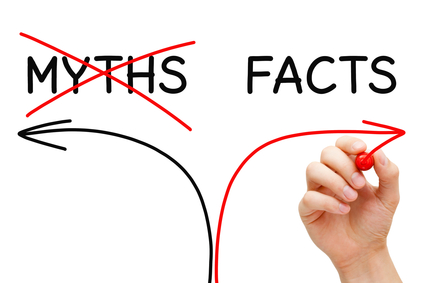
Three Swedish researchers did a study on the information published online by the National Institute of Mental Health (NIMH) on ADHD. What is intriguing about their study is that they were looking at how the NIMH document sought to persuade its readers to take action to address their child’s ADHD problem. They suggested there was a circular argument wherein ADHD was defined according to the presence of certain behaviors, which the diagnostic label of ADHD was said to explain. They also pointed out how ADHD is presented as legitimate medical disorder, despite the fact that “diagnostic criteria are subjectively interpreted from the behavior of the child.”
The authors, Erlandsson, Lundun and Punzi, linked this Easy-to-Read NIMH document on ADHD in their study. However, their citations appear to be from this NIMH document, “What is Attention Deficit Hyperactivity Disorder (ADHD, ADD)?” They noted where the image of ADHD as a legitimate medical disorder was established by the first sentence of the article, “ADHD is one of the most common childhood disorders [and can continue through adolescence and adulthood].” This is word-for-word in the latter article, where the Easy-to-Read one is slightly different: “ADHD is a common mental disorder that begins in childhood and can continue through adolescence and adulthood.” The bracketed phrase was not quoted by Erlandsson, Lundun and Punzi, possibly because they were looking at ADHD in children; or when they examined the document in October of 2015, it wasn’t there.
Erlandsson et al. noted how the repeated use of the term “disorder” (at least 15 times) and a number of references to brain imaging and brain chemicals gave the impression of a chronic, long-term disability. The rhetoric is clearly suggestive that ADHD is a brain disorder. And yet, because symptoms vary from person to person, the ‘disorder’ can be difficult to diagnose. The so-called ‘key behaviors of ADHD’ are also found in all children—inattention, hyperactivity, and impulsivity. “But for children with ADHD, these behaviors are more severe and occur more often.” They have to be present for at least six months, and be present to a degree “that is greater than other children of the same age.” Erlandsson et al. said:
In fact, as shown in the document, there are no biological markers, environmentally defined categories, or objective tests to distinguish “ADHD” as a discrete condition. Rather, diagnostic criteria are subjectively interpreted from the behavior of the child: “No single test can diagnose a child having ADHD. Instead, a licensed health professional needs to gather information about the child, and his or her behavior and environment.” Professionals as well as teachers and parents are involved in the evaluation and examination process, and subsequently in the diagnostic process.
There is a clear bias in presenting ADHD as a biomedical problem. While saying scientists aren’t sure what causes ADHD, NIMH then said many studies suggest genes play a large role. Twin studies show ADHD runs in families. “Children with ADHD who carry a particular version of a certain gene have thinner brain tissue in the areas of the brain associated with attention.” But the differences were not permanent and as the children with this gene grew up, the brain developed to a normal level of thickness and the ADHD symptoms improved. As Erlandsson et al. commented: “The biomedical discourse assumes that there is a consensus among professionals on how to interpret the behaviors of the child, which means that pharmacological treatment is the preferred intervention.” But this is not the case.
In “ADHD: an Imbalance of Fire over Water or a Case of the Fidgets?” I reviewed several different sources questioning whether ADHD was a biochemical disorder. Psychiatrist Peter Breggin said the search for a genetic and biological cause for ADHD would never succeed because the researchers are looking in the wrong place. Neurologist Fred Baughman said:
Despite regular pronouncements that its biologic roots have been discovered, no proof of a definite physical or chemical abnormality is ever found. All such research and all such claims … have been a sham, meant to create illusions of science and disease while proving nothing.
The NIMH material also did not mention there was a lack of consensus on the safety of using medication to treat children. Rather, medication is said to be a safe treatment: “Under medical supervision, stimulant medications are considered safe.” The potential for substance abuse or dependence is downplayed, saying: “there is little evidence of this.” ADHD stimulants are classified as Schedule II controlled substances, which have “a high potential for abuse, with use potentially leading to severe psychological or physical dependence.” See “ADHD: an Imbalance of Fire over Water or a Case of the Fidgets?” for more information on ADHD medications and addiction.
The consequences of a biomedical view of ADHD were addressed in a recent study by the CDC of ADHD treatment among children between 2 and 5 years of age. While the American Academy of Pediatrics and other organizations recommend behavior therapy ahead of stimulant medication for children under 5, only 53% of children had received behavior therapy in the year prior to the survey, while 47% had received stimulant medication during the previous week. Between 75% and 78.5% of children aged 2-5 with ADHD received one or more ADHD medications.
ADHD is a highly prevalent condition that can lead to poor health and social outcomes. Despite 2007 and 2011 guidelines recommending behavior therapy as first-line treatment for children aged <6 years with ADHD, during 2008–2014 only about half of children aged 2–5 years with ADHD received psychological services. To effectively mitigate impairments associated with ADHD and minimize risks associated with ADHD medications, it is important to increase the percentage of young children with ADHD who receive evidence-based psychological services, especially parent training in behavior therapy.
Around 30% of children aged 3-5 experienced adverse effects from ADHD medications. The most common ones were appetite suppression and sleep problems. But other commonly reported side effects were: abdominal pain, emotional outbursts, irritability, lack of alertness, repetitive behaviors and thoughts, social withdrawal, and irritability when the medication wears off. In one large study, of methylphenidate (Ritalin or Concerta) over 10% of children 3-5 had to stop treatment because of adverse effects. They were also 20% lower for height and 55% lower for weight. Anne Schuchat, the CDC’s Principle Deputy Director, said:
We are still learning about potential side effects of long-term use of ADHD medicine on young children. Until we know more, the recommendation is to refer parents for training in behavior therapy for children under 6 years of age with ADHD.
We recognize that these are not easy treatment decisions for parents to make. We know that behavior therapy is effective, and the skills they learn through behavior therapy can help the whole family be successful. Building these skills in parents and children both empowers families and helps young children with ADHD live up to their full potential.
An article in The Washington Post, “CDC Warns that Americans May Be Overmedicating Youngest Children with ADHD,” addressed this concern as well. The long-term effects of the drugs of choice for treating ADHD, Adderall and Ritalin, were not well studied. An estimated 2 million of the 6 million children diagnosed with ADHD were so labeled between the ages of 2 and 5. While ADHD medications don’t work for everyone, in many cases they take effect almost immediately. In contrast, behavior therapy can take several months to have an impact. However, it can be long lasting; and has no side effects.





